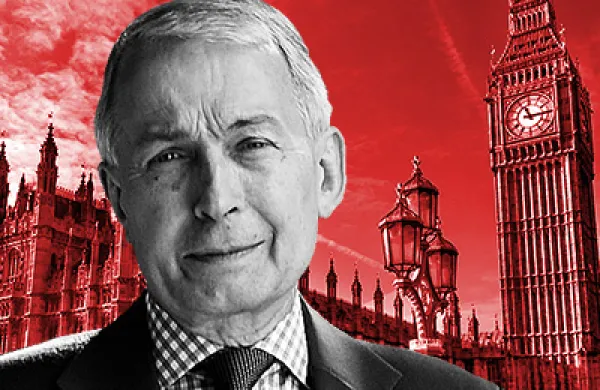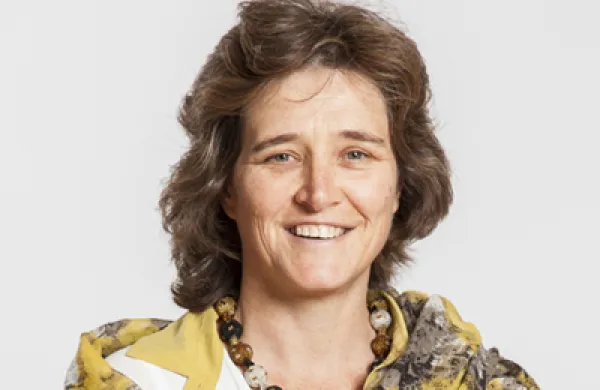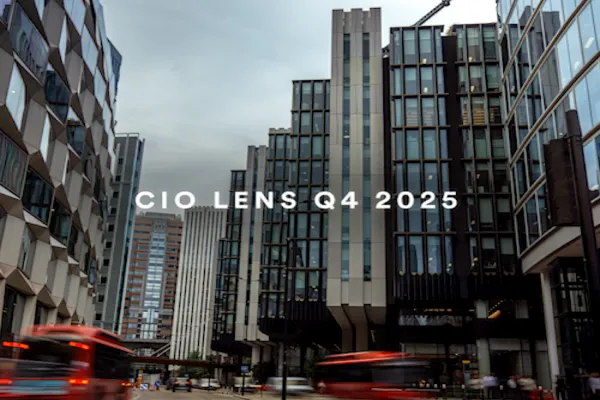When South African President Jacob Zuma sacked Finance minister Nhlanhla Nene in favor of obscure politician David van Rooyen last December, investors around the world woke up to the country’s political instability, sending the rand into a tailspin and foreign capital running for the door.
No one felt the fallout like the managers of Public Investment Corp. (PIC), a state-owned entity that manages 1.8 trillion rand ($122 billion) on behalf of South Africa’s Government Employees Pension Fund (GEPF) and other public bodies. Within 48 hours of Nene’s removal, the value of PIC’s portfolio fell by R99 billion, or 5.5 percent, chief executive Daniel Matjila told Parliament in May. The portfolio recovered in line with markets when Zuma caved in to pressure four days later and replaced van Rooyen with Nene’s predecessor, Pravin Gordhan, but the event underscored just how vulnerable the fund is to domestic political gyrations. “What happened in the past few months is not something that should happen in a strong economy like ours,” Matjila tells Institutional Investor. “It will weaken us very badly, and I’m sure they’ve learned by now how to do things better.”
The storm over Nene’s dismissal may have passed, but PIC remains subject to political influence to a degree that worries some critics, largely because of the former minister. In September 2014, Nene issued a directive that gave PIC a formal economic development objective as part of its investment remit. The rationale was that the fund’s massive resources could be used to drive growth and create jobs, and in the process generate returns for PIC’s portfolio, which holds nearly 13 percent of the market capitalization of the Johannesburg Stock Exchange and 24 percent of the country’s bond market.
Matjila, who took over as chief executive of the fund in December 2014, fully embraces the development mission. “We need to be able to put money in the right places to grow the economy to create jobs so that we can protect our fragile democracy,” he says.
But the new strategy has drawn sharp criticism from the Democratic Alliance, South Africa’s largest opposition party. It fears the development agenda is turning PIC into a pawn of Zuma and his ruling African National Congress (ANC), and sacrificing the interests of the country’s pensioners. The Nene directive, “which prioritizes developmental goals above financial sustainability, clearly indicates that the ultimate beneficiaries — which in this case are mostly pensioners — are not PIC’s first priority,” says David Maynier, a member of Parliament and the Alliance’s spokesman on Finance matters.
State-owned PIC manages funds for 23 different government bodies, but almost 90 percent of its assets come from the GEPF. By law, PIC’s clients bear the fiduciary responsibility for making payouts to beneficiaries. They devise individual investment mandates for PIC to implement; these typically have included development aims and socially responsible investing themes alongside financial goals. Nene’s directive made development an explicit PIC objective for the first time.
It’s not hard to see why the government would want to tap PIC. Once a darling of emerging-markets investors, South Africa’s economy has slowed to a crawl, hampered by low commodity prices, rolling power outages, poor infrastructure and one of the worst droughts in years. Growth has decelerated steadily, from 3.2 percent in 2011 to 1.3 percent last year, and output contracted at a rate of 1.2 percent in the first quarter, putting the economy on the verge of recession. The International Monetary Fund forecasts the country’s GDP will expand by just 0.1 percent this year. Unemployment hit 26.7 percent in the first quarter, public debt has been rising steadily, and the current-account deficit is one of the largest among emerging-markets countries, just over 4 percent of GDP.
“South Africa today is very similar to Brazil one or two years ago, when growth started to slow down and there were risks of a credit downgrade that eventually happened,” says Elena Tedesco, emerging-markets portfolio manager at Hermes Investment Management in London. South Africa narrowly avoided joining Brazil in the BRICS junkyard in June, when Standard and Poor’s announced it would not downgrade the country’s BBB– credit rating, though it maintains a negative outlook.
The Johannesburg Stock Exchange saw R55 billion in foreign capital flee its equity market in the first five months of this year while R25 billion flowed into bonds. “We don’t feel that South Africa is being unduly pummeled compared to other emerging markets,” says the exchange’s chief, Nicky Newton-King. With its Anglo-Saxon legal system, South Africa continues to score highly among developing nations for its ease of doing business and protection of investors’ rights. But it suffers from the highest Gini coefficient in the emerging world, and that exorbitant level of income inequality, combined with outrage over alleged cronyism and graft in government, has sparked protests against the ANC ahead of local government elections in August. PIC, meanwhile, has become a football: In July the Congress of South African Trade Unions, an ANC supporter, announced plans to pressure the firm to invest in infrastructure and other projects to combat poverty.
PIC invests about 90 percent of its assets in South Africa. The firm began investing abroad in 2012, primarily targeting the African continent, but the fund’s development objectives have overshadowed talk of greater international diversification.
Although former minister Nene spelled out those objectives nearly two years ago in a strategic statement of intent, the Treasury didn’t release that document until this June, following pressure from the Alliance’s Maynier. The statement, obtained by II, outlines 11 principles that PIC should apply to its investments. The first one directs the firm to “contribute to the development and transformation of the South African economy and the financial services and asset management sectors in particular within the prescripts of client mandates.” Another principle calls on management to “ensure that PIC remains financially sustainable over the long term.”
About 20 percent of PIC’s portfolio is earmarked for unlisted local investments, with a special focus on development projects. In the financial year ended March 31, 2015, the latest for which figures are available, PIC announced a record 26 unlisted transactions totaling R13.1 billion, with 80 percent committed to South African development projects.
Matjila, who took over as PIC’s chief executive in December 2014 after more than nine years as CIO, says his approach differs from the firm’s previous development efforts by making economic impact the primary goal. One of his first moves was to launch an initiative dubbed Developmental Investing for Radical Economic Transformation, or DIRECT. (“Politicians love the word ‘radical,’” he explains.) The firm has invested about $2 billion under the program and made a return of about 10 percent, he says.
PIC aims to invest $2 billion to $3 billion a year over the next three to five years through DIRECT, targeting strategic sectors like agriculture, mining, manufacturing, health care, education and infrastructure, Matjila says. Such efforts will boost financial returns by stimulating the economy, he insists.
“Once you create jobs and South Africans are working, it changes the economic profile of the country quite significantly,” Matjila asserts. PIC contends it created or preserved more than 80,000 jobs with its investments in the 2015 fiscal year, which should relieve pressure on the country’s fund for unemployment benefits (also managed by PIC).
According to Elias Masilela, Matjila’s predecessor as CEO, PIC’s main client, GEPF, made a conscious decision to invest in the real economy in 2010 to increase South Africa’s competitiveness, boost employment and reduce inequality; he says such development-oriented thinking isn’t unique to South Africa. In the U.K., for example, the government is consolidating its Local Government Pension Scheme from 89 funds to about eight to give them the scale to make greater infrastructure investments.
“The world over, it has been accepted that the biggest and most reliable sources of capital for long-term investment will be pension funds,” Masilela says. “And the way in which pension funds understand their role in an economy is extremely important. It determines whether they are going to have a positive impact on the economy or a muted impact.”
Maynier is determined to shed more light on PIC’s development efforts, particularly its unlisted investments, which the firm does not disclose in detail. “The risk of PIC becoming the ruling party’s piggy bank is high,” he tells II in an e-mail. “So it’s absolutely imperative that we crack open PIC.”
Although Matjila says about 75 percent of new development investments will target listed securities, some of the most critical projects involve private equity and real estate. In the March 2015 financial year, PIC financed nearly 30,000 affordable houses, three new hospitals and 350 small and medium-size businesses, and provided more than 15,000 student loans.
In May, Deputy Finance Minister Mcebisi Jonas, who also chairs PIC, told Parliament the firm would provide a detailed account of its unlisted investments. In June, Matjila wrote to Maynier to say PIC still intends to provide disclosures but has enlisted a lawyer to advise on how to treat certain confidentiality agreements. Maynier isn’t holding his breath. “I have no indication of when we will receive the information but suspect that PIC is going to try and find legal loopholes, including mystery confidentiality agreements, to try and prevent or limit the extent of the disclosure of information to Parliament,” he says.•
Get more on pensions.






